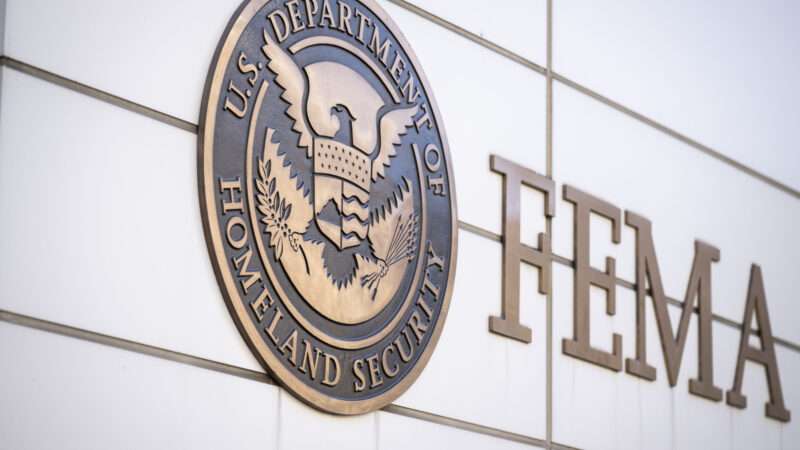
The Federal Emergency Management Agency (FEMA) has received praise and scorn for its responses to Hurricanes Helene and Milton. Regardless of FEMA's performance, many might be surprised to learn that Goal 1 of FEMA's 2022-2026 Strategic Plan is to "Instill Equity as a Foundation of Emergency Management."
FEMA's equity agenda begins with ensuring that all Americans can access the agency's resources. Objective 1.2 of the December 2021 plan aims to "remove barriers to FEMA programs," acknowledging that some people have difficulty understanding the agency's programs "due to language accessibility, literacy, technical expertise, or disability challenges."
Removing barriers is a laudable goal consistent with equal protection under the law. However, FEMA's plan goes well beyond ensuring equal access.
To address systemic differences in society, FEMA says it "must direct its resources to eliminate disparities." Yet, in the very next sentence, the agency admits that its "assistance is not designed to solve societal inequities." So, is FEMA trying to reduce systemic inequities or not?
FEMA's February 2022 Equity Action Plan stated that it will direct "resources to eliminating disparities in outcomes." Building Resilient Infrastructure and Communities (BRIC) and Flood Mitigation Assistance (FMA) are two of the agency's programs that advance such distributional equity by participating in the Biden administration's Justice40 initiative.
Justice40 directs 40 percent of the benefits of certain federal "climate, clean energy, affordable and sustainable housing, and other investments…to disadvantaged communities." FEMA's Regional Catastrophic Preparedness Grant (RCPG) and Risk Mapping, Assessment, and Planning (Risk MAP) programs were added to Justice40's Official Covered Programs List in November 2023.
FEMA Administrator Deanne Criswell reiterates the agency's commitment to redress systemic inequities in the Post-Disaster Guide for Local Officials and Leaders: "At FEMA, we are working hard to instill equity as a foundation of emergency management." The guide defines equitable recovery as those "policies, practices, communications, and distribution of resources [that] are impartial, fair, just, and responsive to the needs of all impacted community members."
Impartiality, fairness, and justice are unobjectionable goals; closer inspection of FEMA's guide raises doubts about whether these objectives are reflected in the agency's policies.
The guide begins by distinguishing equity from equality: The former is the recognition "that each person has different circumstances and allocates resources and opportunities accordingly"; the latter means each individual "receiv[ing] the same resources and opportunities." The agency's endorsement of equity over equality has troubling implications for its purported impartiality.
To address "systemic inequalities over an extended time frame," the agency deploys its Equity Advisor and the Equity Enterprise Steering Group (EESG). EESG's work includes establishing an intra-agency Equity Day, recommending "Indigenous storyteller[s] to help…navigate cultural sensitivities," and encouraging funding for "public art…forum theater, and creative placemaking [to] convey risk reduction to communities," as specified in the guide.
FEMA recommends public officials establish "a baseline to determine the resource gaps that exist between community members" and that they incorporate diversity, equity, inclusion, and accessibility (DEIA)—because DEI was insufficiently inclusive—to "conscientiously identify and correct any prior underinvestment and pre-existing inequities."
FEMA is right to recognize that certain communities "suffer disproportionately from disasters." The methodology FEMA employs to identify these communities is concerning.
FEMA uses the National Risk Index, a component of which is the Social Vulnerability Index (SVI), jointly developed by the Centers for Disease Control and Prevention and the Agency for Toxic Substances and Disease Registry. The SVI comprises four categories: socioeconomic status, household characteristics, housing type, and racial and ethnic minority status. While the first three categories of the SVI do not discriminate on the basis of immutable characteristics, the last one does.
FEMA is not dispatching helicopters to evacuate preferred groups while passing others by, but the agency does consider race and ethnicity when identifying which communities to give special consideration. FEMA should focus on climate and economic factors when deciding what communities are especially vulnerable to disaster, not race and ethnicity.
The post FEMA Should Stick to Disaster Recovery and Quit Social Engineering appeared first on Reason.com.







